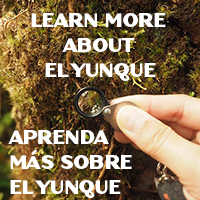Yellow-Bellied Sapsucker
Yellow-bellied Sapsucker (Eng.), Carpintero Pechiamarillo (Sp.), Sphyrapicus varius (Sci.); distribution – Transient – winter migrant to West Indies from Canada, eastern Alaska and northeast United States.
Photo © 2008 Dominic Sherony. Information compiled by Alan Mowbray, Interpretive Media Writer, EYNF/LEF
General Information
Taxonomy: Class – Aves, Order – Piciformes, Family – Picidae, Genus – Sphyrapicus, Species – S. varius. The Yellow-bellied Sapsucker is part of the New World sapsucker genus Sphyrapicus which is within the woodpecker family Picidae.
Description
S. varius is a medium-sized avian species – 8 to 8.5 inches (20 to 21.5 centimeters) in length – it can be easily identified by the black upper body and by the large white patches on black wings. It has a black head with white lines down the sides, a red forehead and crown, a yellow breast and upper belly and a white lower belly and rump, and a black tail with a white center bar. Adult males have a red throat, while female’s throats are white. Young are dull-brown in color but display the white wing patches of adults.
Habits
Yellow-bellied Sapsuckers forage by drilling holes in trees with their strong beaks to obtain sap and insects attracted to it. They may also pick insects from tree trunks or capture them in flight and have also been observed eating fruits and berries. They nest in large cavities excavated in deciduous trees, often choosing a tree weakened by disease – the same site may be used for several years. The species has been seen to mate with the same partner from year to year, as long as the other partner survives.
Habitat
S. varius breeds in forested areas across Canada, eastern Alaska and the northeastern United States, preferring young, mainly deciduous forest locations. In winter, they leave their summer range and migrate to the southeastern United States, West Indies and Central America.
Where to look for this animal in the EYNF
During winter months these birds can be occasionally be spotted foraging for sap and insects in trees near nature trails throughout the recreational areas of the forest.



